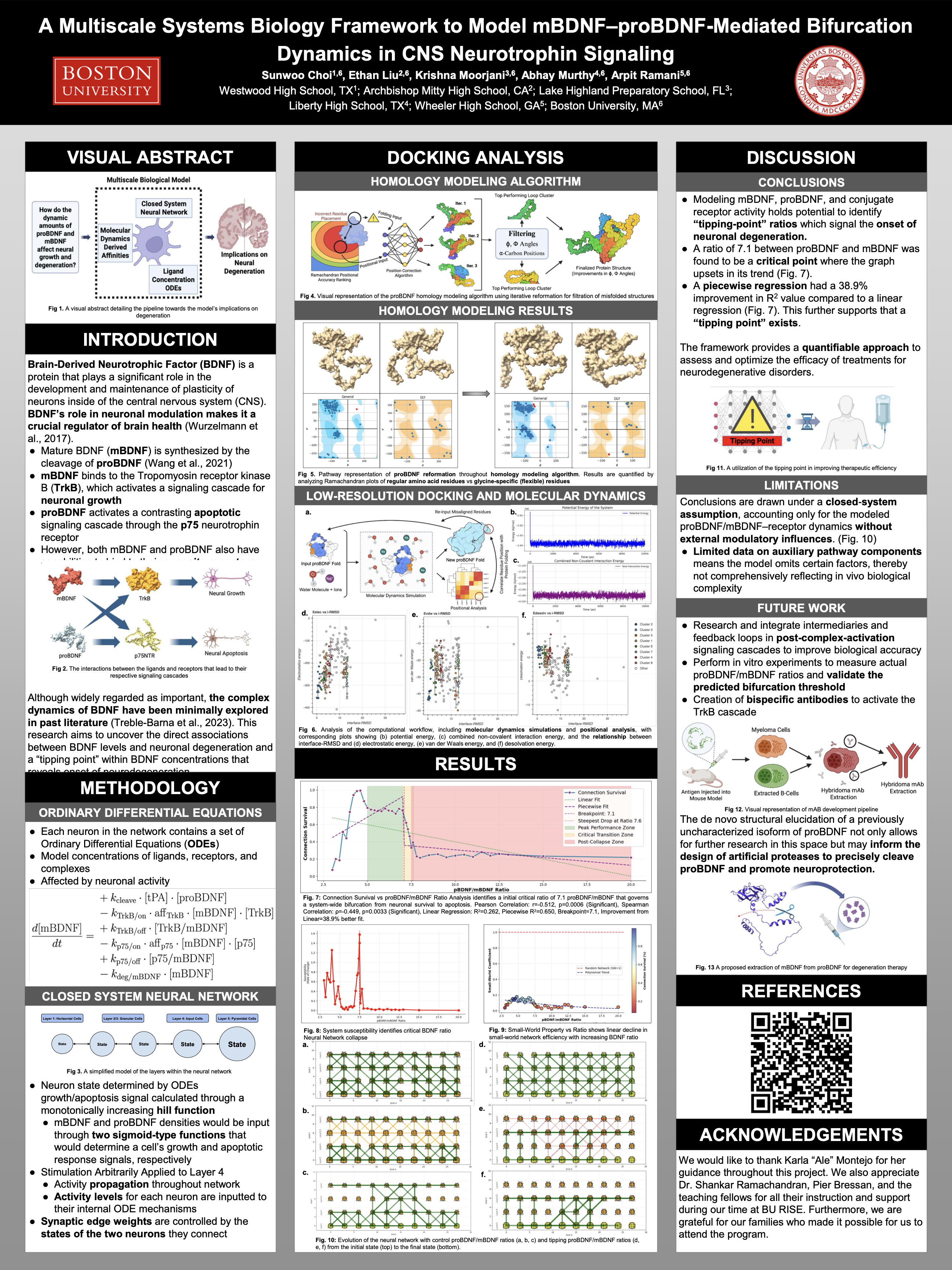Research Poster Accepted
This research was accepted as a late-breaking submission to the Society for Neuroscience (SFN) Annual Meeting 2025, the world's largest and most prestigious neuroscience conference. The work represents a novel computational approach to understanding brain-derived neurotrophic factor (BDNF) signaling dynamics in the central nervous system.
🏆 Significance of SFN Acceptance
The Society for Neuroscience Annual Meeting attracts over 30,000 neuroscientists from around the world. Acceptance as a late-breaking submission is particularly competitive, reserved for cutting-edge research with significant implications for the field. This recognition places the work among the most current and impactful neuroscience research globally.
Research Overview
Brain-Derived Neurotrophic Factor (BDNF) plays a crucial role in neural plasticity, learning, memory, and various neurological disorders. However, BDNF exists in multiple forms (mature BDNF and its precursor proBDNF) that have opposing effects on neural function.
This research develops a comprehensive multiscale systems biology framework to model the complex dynamics between mature BDNF (mBDNF) and proBDNF. The framework captures the bifurcation dynamics—points where small changes in conditions can lead to dramatically different outcomes—in neurotrophin signaling pathways.
Why This Matters
Understanding these bifurcation dynamics is critical for developing targeted therapies for neurological conditions including depression, Alzheimer's disease, and other neurodegenerative disorders. The model provides insights into how the balance between mBDNF and proBDNF affects neural survival, plasticity, and death.
Methodological Approach
Multiscale Framework: The model integrates multiple biological scales, from molecular interactions to cellular signaling pathways, providing a comprehensive view of BDNF dynamics.
Bifurcation Analysis: Applied advanced mathematical techniques to identify critical transition points in the signaling network where system behavior changes qualitatively.
Systems Biology Integration: Combined molecular biology knowledge with computational modeling to create a predictive framework for understanding neurotrophin signaling.
GitHub Repository
The computational models, analysis scripts, and visualization tools used in this research are available on GitHub. The repository includes detailed documentation of the mathematical framework, simulation code, and data analysis pipelines.
Key Contributions
Novel Framework: Developed the first comprehensive multiscale model specifically addressing mBDNF-proBDNF bifurcation dynamics in CNS signaling.
Predictive Power: The model can predict how different conditions (drug treatments, genetic variations, disease states) affect the balance between neuroprotective and neurodegenerative signaling.
Therapeutic Implications: Identified potential intervention points in the signaling network that could be targeted for treating neurological disorders.
Interdisciplinary Impact: Bridges computational neuroscience, molecular biology, and systems biology, demonstrating the power of integrative approaches to complex biological questions.
Future Directions
This research conducted through the BU RISE Computational Neuroscience Program opens several exciting avenues for future investigation:
• Extension to other neurotrophin family members and their interactions
• Integration with experimental data from in vitro and in vivo studies
• Application to specific disease models (Alzheimer's, depression, TBI)
• Development of therapeutic strategies based on model predictions
• Collaboration with experimental neuroscientists to validate predictions
